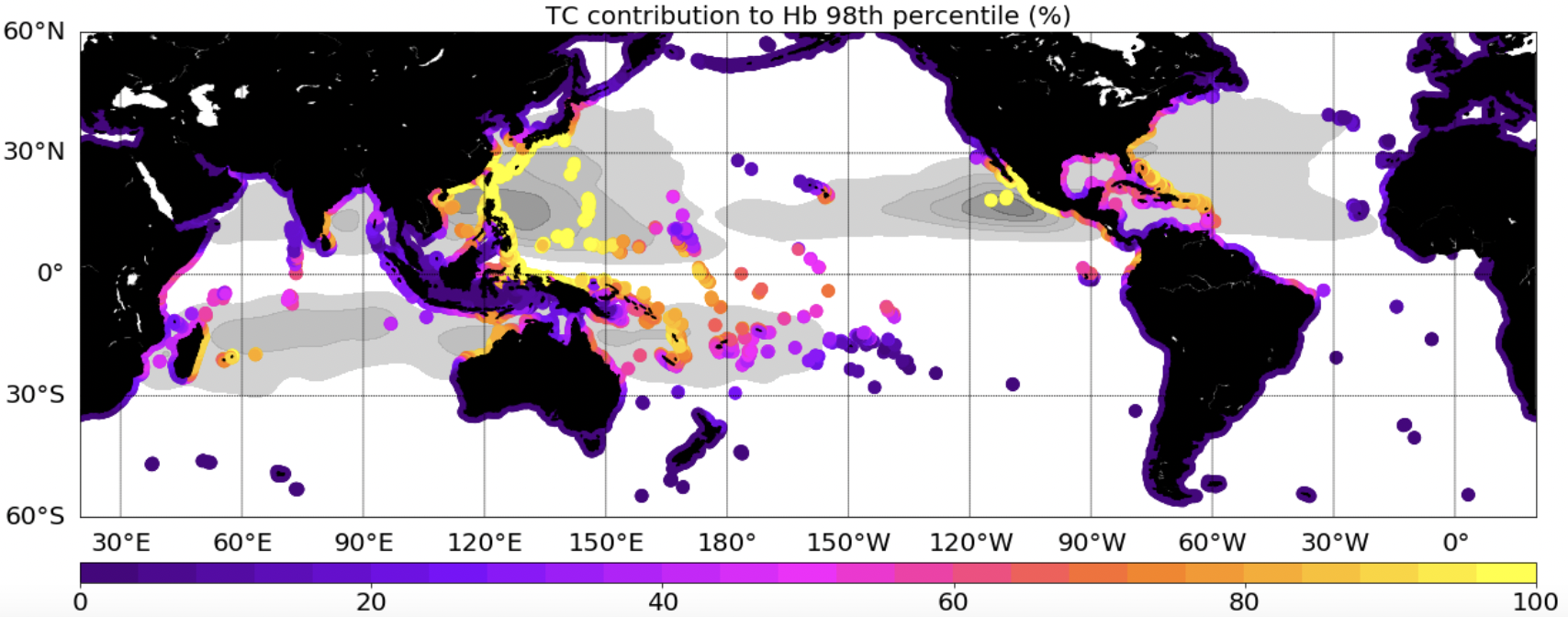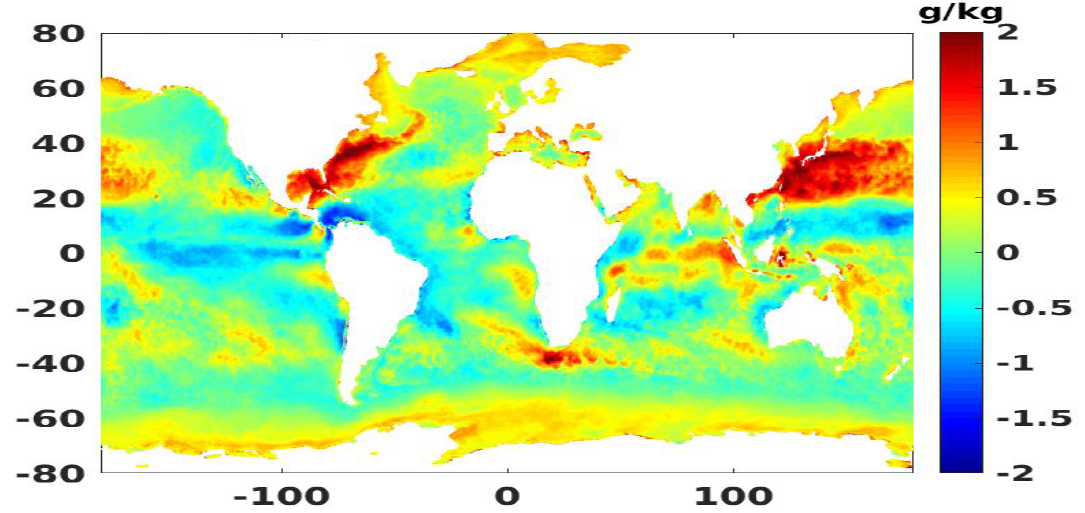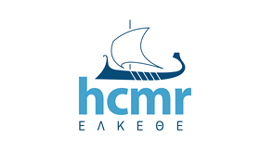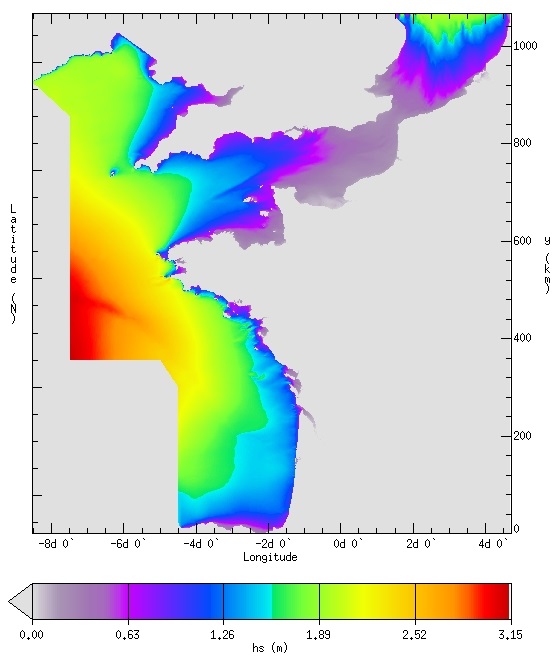Oceanographic geographical features
Type of resources
Available actions
Topics
Keywords
Contact for the resource
Provided by
Years
Formats
Representation types
Update frequencies
status
Scale
Resolution
-
Sediment Profile Images (SPIs) are commonly used to map physical, biological and chemical/nutrient gradients in benthic habitats. SpiArcBase is a software that has been developed for the analysis of Sediment Profile Images (SPIs). It has been conceived to improve the objectivity of extracted information (especially the apparent Redox Potential Discontinuity (aRPD). The software presents a graphical user interface designed to enhance the interpretation of features observed on SPIs in an objective manner and to facilitate image management and structures visualization via a data base.The software also allows for the storage of generated data and the automatic computation of a benthic habitat quality index. The facilities provided within JERICONext include access to the software through free downloading and assistance in its utilization.
-

This dataset provides extreme waves (Hs: significant wave height, Hb:breaking wave height, a proxy of the wave energy flux) simulated with the WWIII model, and extracted along global coastlines. Two simulations, including or not Tropical Cyclones (TCs) in the forcing wind field, are provided.
-

Daily air-sea heat fluxes dataset on the last 27 years (1992-2018). Global coverage with 0.25° resolution. Data is mainly coming from aggregated calibrated scatterometer datasets and numerical models. Main geophysical parameters are: sensible heat flux, latent heat flux, wind speed, SST, air temperature. Latest version : 4.1 released in June 2019.
-

SpiArcBase is a software developed for the treatment of Sediment Profile images (SPIs). Sediment Profile Images (SPIs) are widely used for benthic ecological quality assessment under various environmental stressors. The processing of the information contained in SPIs is slow and its interpretation is largely operator dependent. SpiArcBase enhances the objectivity of the information extracted from SPIs, especially for the assessment of the apparent Redox Potential Discontinuity (aRPD). This software allows the user to create and manage a database containing original SPIs and corresponding derived pieces of information. Once you have downloaded it, you can ask for help and stablish a helpdesk.
-

Surface current data measured by the CNR-ISMAR HF radar network are made available in graphical format for the last 48 hours and in real time and delayed mode via a THREDDS catalog which provides metadata and data access. The web site gives information on HF radar technology, sites position and operational parameters, and links to the THREDDS catalog. The catalog offers different remote-data-access protocols such as Open-source Project for a Network Data Access Protocol (OpenDaP), Web Coverage Service (WCS), Web Map Service (WMS) (OGS standards), as well as pure HTTP or NetCDF-Subsetter. They allow for metadata interrogation and data download (even sub-setting the dataset in terms of time and space) while embedded clients, such as GODIVA2, NetCDF-JavaToolsUI and Integrated Data Viewer, grant real-time data visualization directly via browser and allow for navigating within the plotted maps, saving images, exporting-importing on Google Earth, generating animations in selected time intervals. The data on the THREDDS catalog are organized in two folders, collecting the hourly current files of the last five days and grouping all the historical data. The two folders are accessible both in aggregated and in non-aggregated configuration. The data set consists of maps of radial and total velocity of the sea water surface current collected by the HF radars within the Italian Coastal Radar Network established in the framework of the Italian flagship project RITMARE. Surface ocean velocities estimated by HF Radar are representative of the upper 0.3-2.5 meters of the ocean. The radar sites are operated according to Quality Assessment procedures and data are processed for Quality Control. Data access tools are compliant to Open Geospatial Consortium (OGC), Climate and Forecast (CF) convention and INSPIRE directive. The use of netCDF format allows an easy implementation of all the open source services developed by UNIDATA.
-

The data recorded by the oceanographic platforms operate in the Aegean and the Ionian Seas (fixed stations, ferry box system, gliders) are released through the POSEIDON portal. Physical and biochemical parameters of the marine environment as well as atmospheric parameters in the fixed station locations are available both in real time and delayed mode. The forecasting module of the POSEIDON system consists of four numerical models that provide in daily basis forecasts regarding the atmospheric, sea state, hydrodynamic and ecological conditions of the Eastern Mediterranean. The online POSEIDON database contains the data recorded by the insitu platforms offering also downloading functions for the whole data set, while a user-friendly tool is also available for accessing the results of all the forecasting models for the last five years.
-

A final aggregated vulnerability index was obtained by combining all the partial indices belonging to each of the five vectors with V4 scores multiplied by −1 since Vector 4 indicators are of “resilience” rather than of “vulnerability”. Figures 6a and 6b show respectively map and cartogram of the geographical distribution obtained for this vector. As can be seen, except for most of Ireland, the Atlantic European coast ap- pears in redish colours corresponding to higher values of vulnerability.
-

IOWAGA sea-states forecast best estimate generated by the wave model WAVEWATCH-III and forced by ECMWF winds on the French coast of the Atlantic ocean unstructured grid from 2017 to now
-
A global Group for High Resolution Sea Surface Temperature (GHRSST) Level 2P dataset based on multi-channel sea surface temperature (SST) retrievals generated in real-time from the Advanced Very High Resolution Radiometer (AVHRR) on the European Meteorological Operational-A (MetOp-A; launched 19 Oct 2006) ) satellite produced and used operationally in oceanographic analyses and forecasts by the US Naval Oceanographic Office (NAVO). The MetOp satellite program is a European undertaking providing weather data services for monitoring climate and improving weather forecasts. It was jointly established by the European Space Agency (ESA) and the European Organisation for the Exploitation of Meteorological Satellites (EUMETSAT) with a contribution by the US National Oceanic and Atmospheric Administration (NOAA) of an AVHRR sensor identical to those flying on the family of Polar Orbiting Environmental Satellites (POES). AVHRR instruments measure the radiance of the Earth in 5 (or 6) relatively wide spectral bands. The first two are centered around the red (0.6 micrometer) and near-infrared (0.9 micrometer) regions, the third one is located around 3.5 micrometer, and the last two sample the emitted thermal radiation, around 11 and 12 micrometers, respectively. The legacy 5 band instrument is known as AVHRR/2 while the more recent version, the AVHRR/3 (first carried on the NOAA-15 platform), acquires data in a 6th channel located at 1.6 micrometer. Typically the 11 and 12 micron channels are used to derive SST sometimes in combination with the 3.5 micron channel. The MetOp-A platform is sun synchronous generally viewing the same earth location twice a day (latitude dependent) due to the relatively large AVHRR swath of approximately 2400 km. The highest ground resolution that can be obtained from the current AVHRR instruments is 1.1 km at nadir. This particular dataset is produced from Global Area Coverage (GAC) data that are derived from an on-board sample averaging of the full resolution global AVHRR data. Four out of every five samples along the scan line are used to compute on average value and the data from only every third scan line are processed, yielding an effective 4 km resolution at nadir. Further binning and averaging of these pixels results in a final dataset resolution of 8.8 km.
-
A global Group for High Resolution Sea Surface Temperature (GHRSST) Level 2P dataset based on multi-channel sea surface temperature (SST) retrievals generated in real-time from the Advanced Very High Resolution Radiometer (AVHRR) on the European Meteorological Operational-B (MetOp-B; launched 19 Oct 2006) ) satellite produced and used operationally in oceanographic analyses and forecasts by the US Naval Oceanographic Office (NAVO). The MetOp satellite program is a European undertaking providing weather data services for monitoring climate and improving weather forecasts. It was jointly established by the European Space Agency (ESA) and the European Organisation for the Exploitation of Meteorological Satellites (EUMETSAT) with a contribution by the US National Oceanic and Atmospheric Administration (NOAA) of an AVHRR sensor identical to those flying on the family of Polar Orbiting Environmental Satellites (POES). AVHRR instruments measure the radiance of the Earth in 5 (or 6) relatively wide spectral bands. The first two are centered around the red (0.6 micrometer) and near-infrared (0.9 micrometer) regions, the third one is located around 3.5 micrometer, and the last two sample the emitted thermal radiation, around 11 and 12 micrometers, respectively. The legacy 5 band instrument is known as AVHRR/2 while the more recent version, the AVHRR/3 (first carried on the NOAA-15 platform), acquires data in a 6th channel located at 1.6 micrometer. Typically the 11 and 12 micron channels are used to derive SST sometimes in combination with the 3.5 micron channel. The MetOp-A platform is sun synchronous generally viewing the same earth location twice a day (latitude dependent) due to the relatively large AVHRR swath of approximately 2400 km. The highest ground resolution that can be obtained from the current AVHRR instruments is 1.1 km at nadir. This particular dataset is produced from Global Area Coverage (GAC) data that are derived from an on-board sample averaging of the full resolution global AVHRR data. Four out of every five samples along the scan line are used to compute on average value and the data from only every third scan line are processed, yielding an effective 4 km resolution at nadir. Further binning and averaging of these pixels results in a final dataset resolution of 8.8 km.
 Catalogue PIGMA
Catalogue PIGMA